As the new school year kicks off, hosting memorable back to school dinner ideas can set the tone for educational events, fostering community spirit and excitement for learning. Whether you’re organizing a PTA gathering, teacher appreciation night, or a family-oriented school fundraiser, the right menu can make all the difference. In this guide, we’ll share creative and crowd-pleasing dinner ideas—from easy make-ahead meals to themed dishes—that will fuel conversations, inspire connections, and make your educational event a hit.
Back to School Dinner Ideas Kids Will Actually Love
What Are the Best Back to School Dinner Ideas for Educational Events?
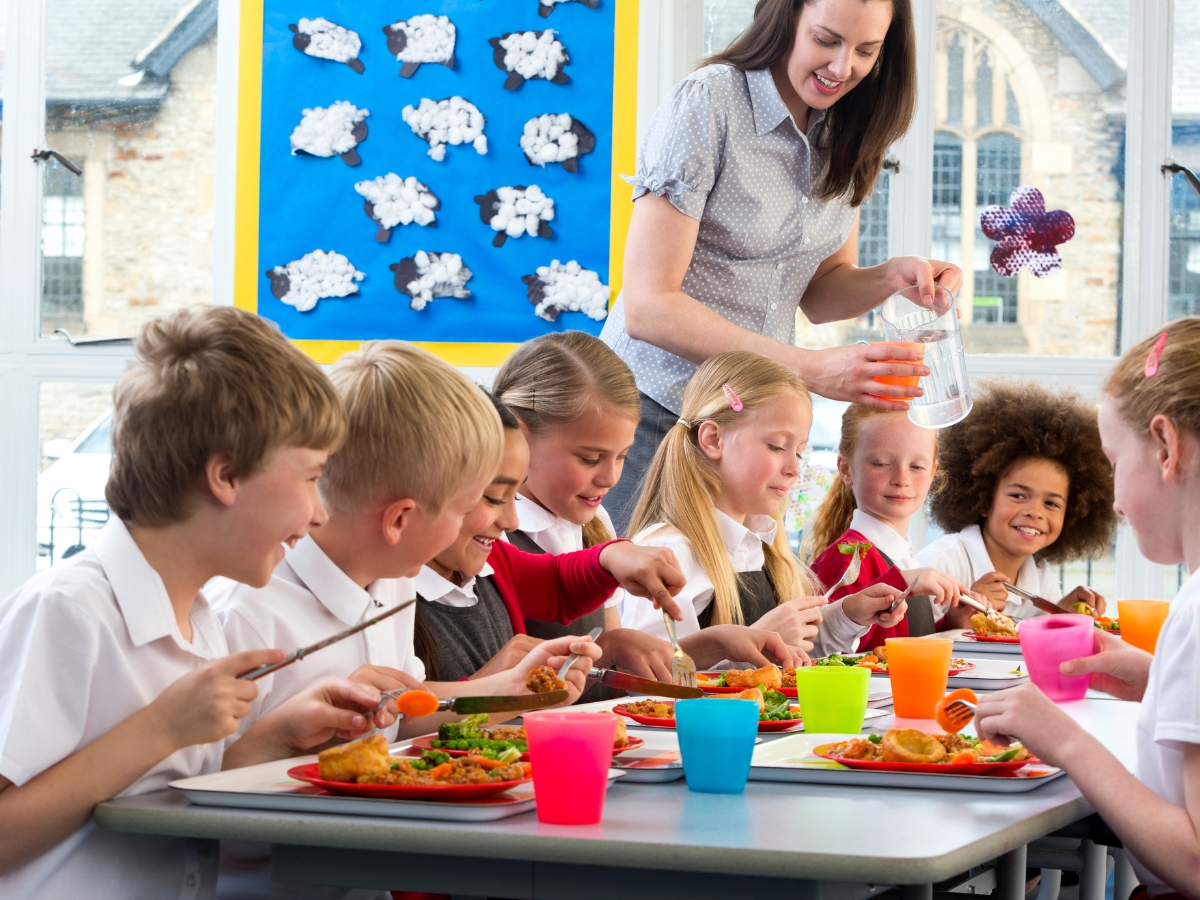
Planning back to school dinner ideas for faculty, staff and families means finding dishes that feel both welcoming and practical. The right menu combines comforting favorites with fresh ingredients, encourages mingling and meets diverse dietary needs. Whether it’s an after-hours faculty kickoff or a parent-teacher meet-and-greet, a well-chosen dinner can set a positive tone for the year ahead.
Which Dinner Menus Resonate with Faculty and Staff?
Successful back to school dinner ideas often revolve around shareable, build-your-own or family-style offerings that allow guests to customize their plates. A taco bar featuring seasoned beef or chicken alongside roasted vegetables and corn or flour tortillas invites conversation as people assemble their own meals. Barbecue platters can include pulled pork, smoked chicken and sausages served with tangy coleslaw and cornbread—comfort food that feels celebratory.
For a lighter option, family bowls of pasta in vegetarian pesto or hearty meat ragù accommodate varied appetites. Mediterranean-inspired stations with grilled pita, marinated olives, grape leaves and protein-packed falafel encourage small-group interactions. Each of these menus brings people together around a common table while letting individuals tailor their meals.
How Can Menus Accommodate Dietary Restrictions and Preferences?
An inclusive dinner accounts for vegetarian, vegan, gluten-free, and allergy-sensitive diners without making separate or obvious “special” plates. Grilled chicken skewers marinated in olive oil and herbs naturally require no gluten, and swapping in tofu or roasted portobello caps creates a vegan alternative that appeals to everyone. Buffalo-style cauliflower florets served with dairy-free ranch dressing provide a bold, plant-based option. Quinoa salad tossed with roasted seasonal vegetables and citrus-lemon vinaigrette offers a nut-free, protein-rich salad, while pasta primavera made with chickpea or brown-rice pasta and a medley of garden vegetables meets both dairy-free and vegan needs. By labeling each dish clearly and positioning these options alongside the main offerings, hosts ensure every guest feels considered.
What Side Dishes and Desserts Enhance the Meal?
Complemententary sides can round out the menu without overly complicating service. Mexican street-corn salad layered with cotija cheese or its vegan equivalent brightens a taco station. Sweet potatoes roasted with a hint of cinnamon and honey balance barbecue flavors. A fresh fruit platter or skewers of melon, berries and pineapple offer a healthy, color-rich alternative to heavier desserts. For a sweet finish, mini dessert bars—such as brownies made gluten-free and blondies with almond flour—provide a bite-sized treat that accommodates most dietary preferences.
How Does Presentation Encourage Community Building?
Setting up the meal in stations or family-style serving dishes encourages small groups to circulate and chat. Long communal tables or round tables invite open conversation, while simple centerpieces—like small potted succulents or seasonal flowers—add warmth without clutter. Clear, attractive signage for each dish helps guests make quick choices and reduces lines. Placing beverage stations with infused waters, iced tea and coffee at a slight remove from the food area eases traffic flow.
What Are Healthy and Allergy-Friendly Dinner Options for Schools?
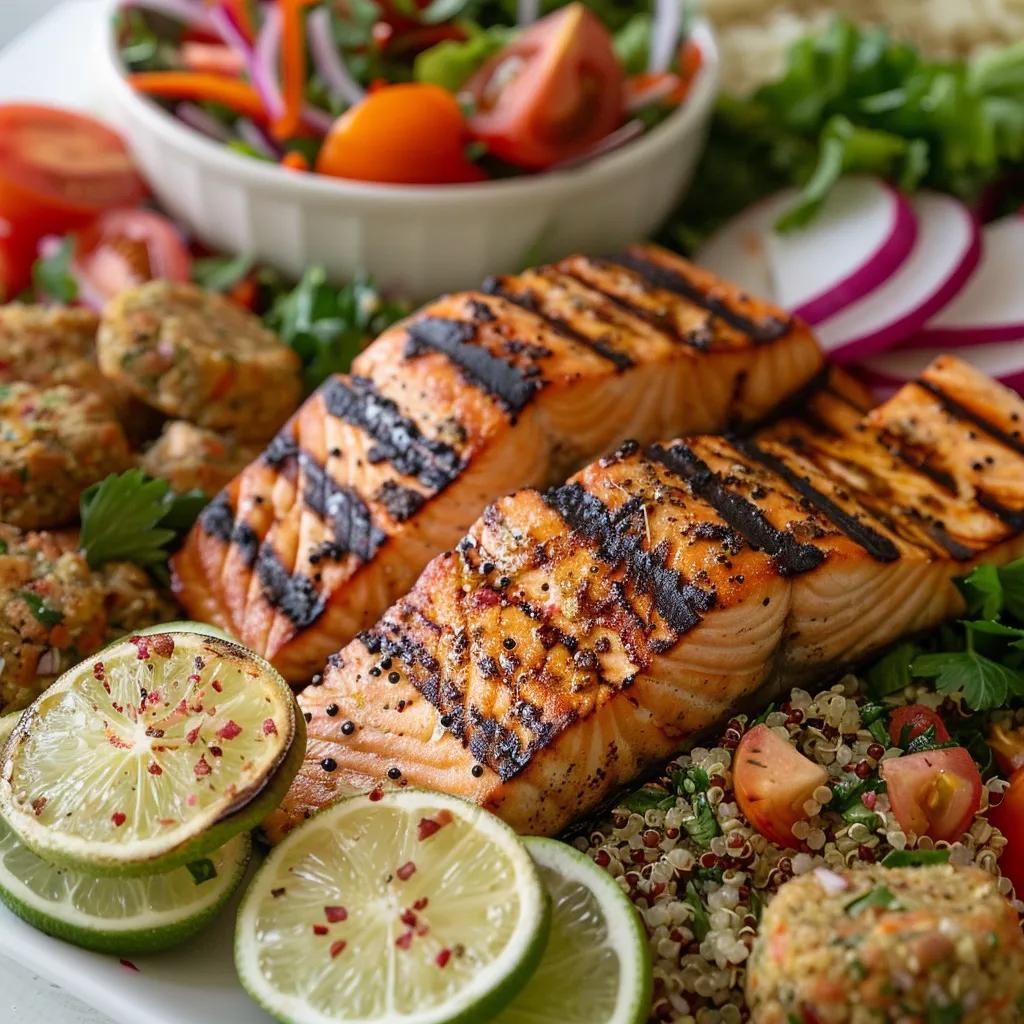
Offering nutritious, allergy-aware dinners at school events helps students stay alert and engaged. Meals built around whole grains, lean proteins and colorful vegetables provide sustained energy and essential nutrients, while careful ingredient choices reduce the risk of allergic reactions. By combining familiar flavors with healthful twists, schools can serve dishes that satisfy diverse needs without compromising taste or presentation.
How Can Protein-Rich Entrées Support Focus and Wellness?
Lean protein is crucial for steady energy and muscle repair. Grilled salmon fillets paired with lemon-dill quinoa and steamed asparagus bring omega-3 fats and complete plant-based protein in one plate. The mild fish flavor appeals to many palates, while the quinoa base offers a nut-free, gluten-free grain option. For those avoiding fish, turkey meatball bowls over brown rice and a roasted vegetable medley combine moist, tender meatballs seasoned with herbs and spices. The brown rice provides fiber for digestive health, and the roasted squash, bell peppers and broccoli add vitamin C and antioxidants.
What Vegetarian and Vegan Choices Work in a School Setting?
Plant-based dishes can satisfy both vegetarian students and those managing dairy or egg allergies. Baked falafel wraps in gluten-free tortillas deliver protein from chickpeas, combined with grated carrots, shredded lettuce and a dairy-free cucumber-mint yogurt sauce. The soft wraps make this meal easy to eat in cafeteria lines or at after-school gatherings. Another option is a build-your-own grain bowl station featuring mixed greens, quinoa or brown rice, marinated tofu or grilled chicken strips, sliced avocado, cherry tomatoes and a variety of dressings. Clearly labeling each topping avoids cross-contamination and lets students tailor meals to their dietary restrictions.
Which Whole Grains and Sides Enhance Nutritional Balance?
Whole grains supply complex carbohydrates and B vitamins, essential for brain function. Serving farro or barley salads tossed with diced cucumber, cherry tomatoes, fresh herbs and a light vinaigrette elevates any dinner menu. A couscous pilaf made with gluten-free millet, raisins and toasted pine nuts (omitted or substituted as needed) offers a slightly sweet side that contrasts well with savory entrées. Steamed green beans tossed with a splash of olive oil and lemon juice or a medley of roasted root vegetables seasoned with cumin and paprika round out the plate with fiber and micronutrients.
How Can Schools Accommodate Common Allergies?
Minimizing cross-contact and using allergy-safe ingredients ensures a worry-free meal for all students. Opting for almond-free pesto made with sunflower seeds and nutritional yeast avoids tree-nut allergens, while soy-based dressings replace dairy-containing creams. Beans, lentils and seeds can augment protein without relying on egg or dairy products. Managers should prepare single-ingredient stations—such as a fruit and vegetable bar—and avoid shared utensils. Providing ingredient lists at serving stations helps students and staff verify safe selections.
Which Types of Educational Events Benefit from Back to School Dinner Catering?
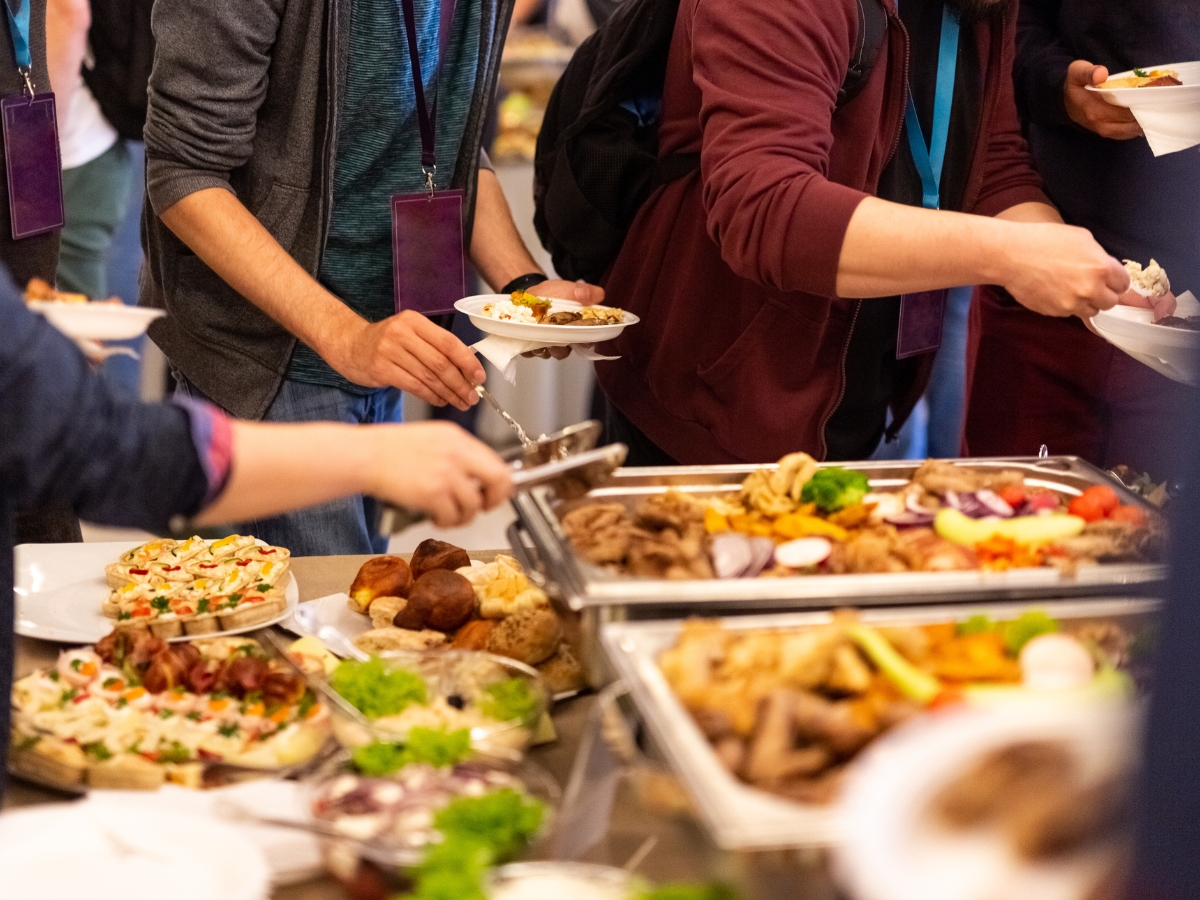
Catering can turn a standard school gathering into a memorable community experience. Events that bring together staff, families and community members gain extra energy and engagement when a thoughtfully planned dinner is part of the program. From small teacher‐appreciation evenings to large open houses, serving prepared meals lets hosts focus on the event’s purpose while guests connect over shared food.
Faculty Dinners and Teacher Appreciation
When celebrating the educators who keep a school running, menus that combine taste with convenience work best. A family‐style roasted chicken breast paired with sweet potatoes and green beans offers a classic, hearty meal that travels well and serves large groups. For vegetarian or allergy‐sensitive staff members, individual pasta plates with grilled vegetables in a light tomato sauce provide a satisfying alternative. Mini dessert assortments—such as flourless chocolate cake or dairy‐free fruit tarts—round out the menu with sweet endings that accommodate gluten‐ and lactose‐sensitive diets. This balanced approach honors teachers’ efforts and reinforces a culture of appreciation without adding extra work for organizers.
Parent-Teacher Conferences and Fundraisers
These daytime or evening events often span several hours, so quick, portable meal options keep conversations and fundraising momentum on track. Boxed lunch kits with sandwich wraps, crisp vegetable sticks and a fresh fruit cup give parents and staff a complete meal without interrupting structured meeting times. For more formal fundraisers, an elegant buffet with a carving station—featuring roast beef or turkey—paired with seasonal salads and artisan rolls makes a polished impression. Beverage service, including hot coffee, iced tea and citrus‐infused water helps guests stay refreshed during lengthy sessions. By choosing a streamlined service format, schools maximize face‐to-face time for parent-teacher engagement and donor networking.
Banquets and Open Houses
Large‐scale community gatherings benefit from display‐style catering that invites exploration and conversation. A grazing table of cured meats, artisanal cheeses and seasonal fruits encourages guests to mingle while sampling a variety of flavors. Small tasting portions—such as bite-sized spring rolls with dipping sauces or skewered chicken satay—introduce international recipes and spark dialogue about cultural diversity. Live cooking stations featuring made-to-order pasta or stir-fry add an interactive element that entertains visitors and showcases culinary skill. Thoughtful station placement and clear signage help guide guest flow and accommodate dietary preferences, ensuring everyone finds something they enjoy.
How Can Schools Plan Seamless Catering for Back to School Dinner Ideas?
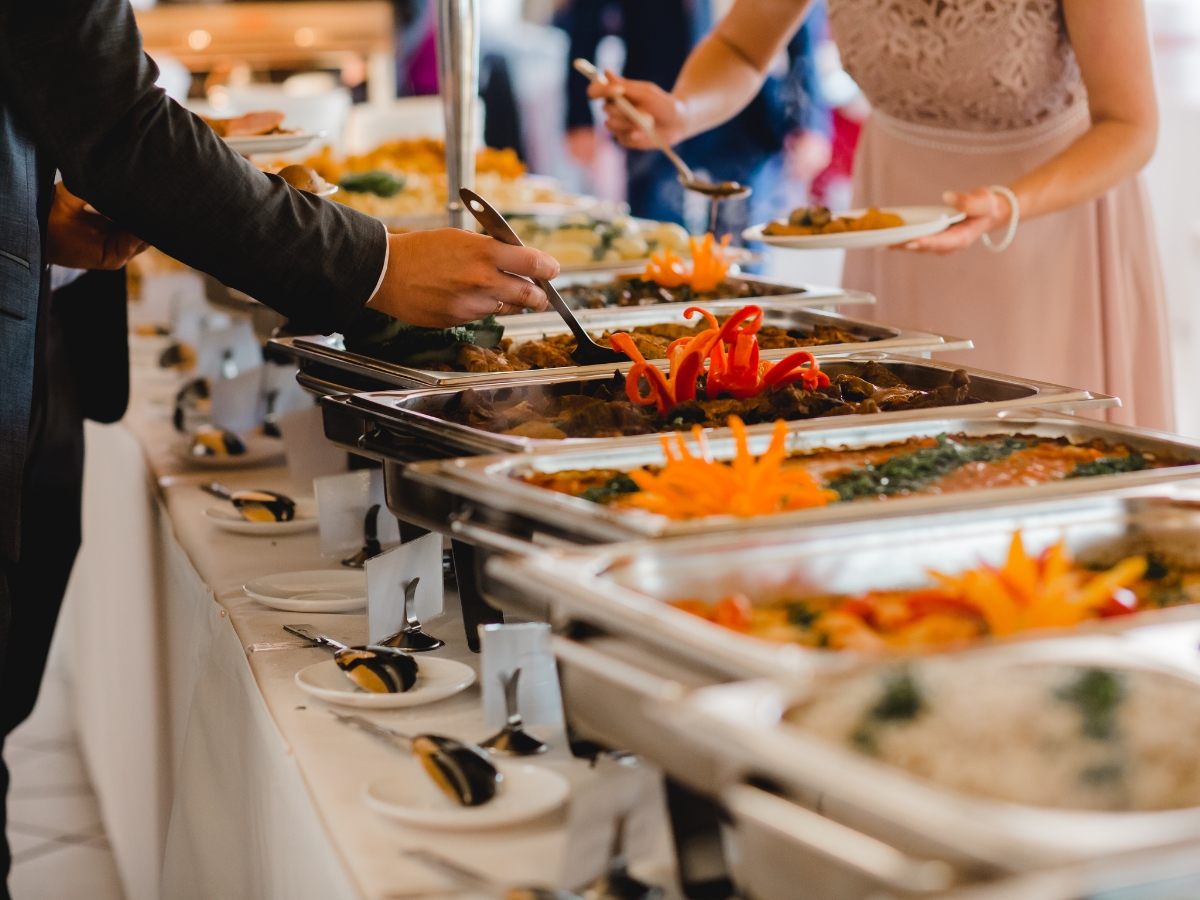
Executing successful back to school dinner ideas require strong coordination between school organizers and caterers. Clear communication of event objectives, guest counts, dietary requirements and venue details lays the foundation. Establishing timelines for delivery, setup, and service ensures that staff and volunteers stay focused on welcoming guests and facilitating conversations, rather than troubleshooting last-minute hiccups.
Coordinating Delivery, Setup and On-Site Service
Begin by sharing the precise delivery location, including loading zones, parking instructions, and any building access codes. Confirm the number of attendees well in advance and update counts promptly if registrations change. Allow adequate buffer time for caterers to unload equipment, warm food items, and arrange table décor before the first guest arrives. Designate a point person on the school side to greet delivery personnel, direct them to the event space, and handle any on-site questions. During the dinner, assign staff or volunteers to monitor serving lines, replenish trays, and clear empty dishes so that the flow of food and conversation remains uninterrupted.
Managing Budget-Friendly Menus Without Compromise
Balancing cost and quality starts with selecting seasonal produce and proteins that stay within budget. Opting for a buffet rather than individually plated meals reduces labor costs and speeds up service. Concentrating on a handful of shared stations—such as a pasta bar or taco station—eliminates the need for numerous small-portion offerings while still giving guests choice. Schools can also negotiate multi-event packages or educational discounts with caterers to secure better pricing for recurring functions. By focusing on core menu items and streamlining staffing requirements, educational events can deliver satisfying meals without overshooting their budget.
Synchronizing Catering with Event Schedules
Integrating catering logistics into the overall event timeline prevents awkward pauses or overlaps. Block out a clear vendor arrival window in the master schedule and share it with all stakeholders. If presentations or speeches are part of the program, coordinate plated courses or pause buffet service accordingly, so that guests can focus on the speaker without plates in hand. Communicate any changes in meeting times or room assignments to the caterer at least three days before the event. On the day itself, keep all parties informed of last-minute adjustments via a single point of contact, using text or walkie-talkies as needed to maintain clarity.
Ensuring Dietary Inclusivity and Guest Satisfaction
Schools should collect information on vegetarian, vegan, gluten-free and allergen-restricted diets during event registration. Providing labeled menu cards at each station helps guests navigate their options easily and avoid cross-contamination. If possible, offer at least one alternative entrée that meets the most common dietary needs, such as a plant-based protein or a gluten-free grain salad. Thoughtful presentation—using colorful, seasonal garnishes and neatly arranged serving dishes—enhances the dining experience and underscores the school’s commitment to inclusive hospitality.
What Are Creative and Themed Dinner Ideas for Back to School Dinner Ideas and Educational Events?
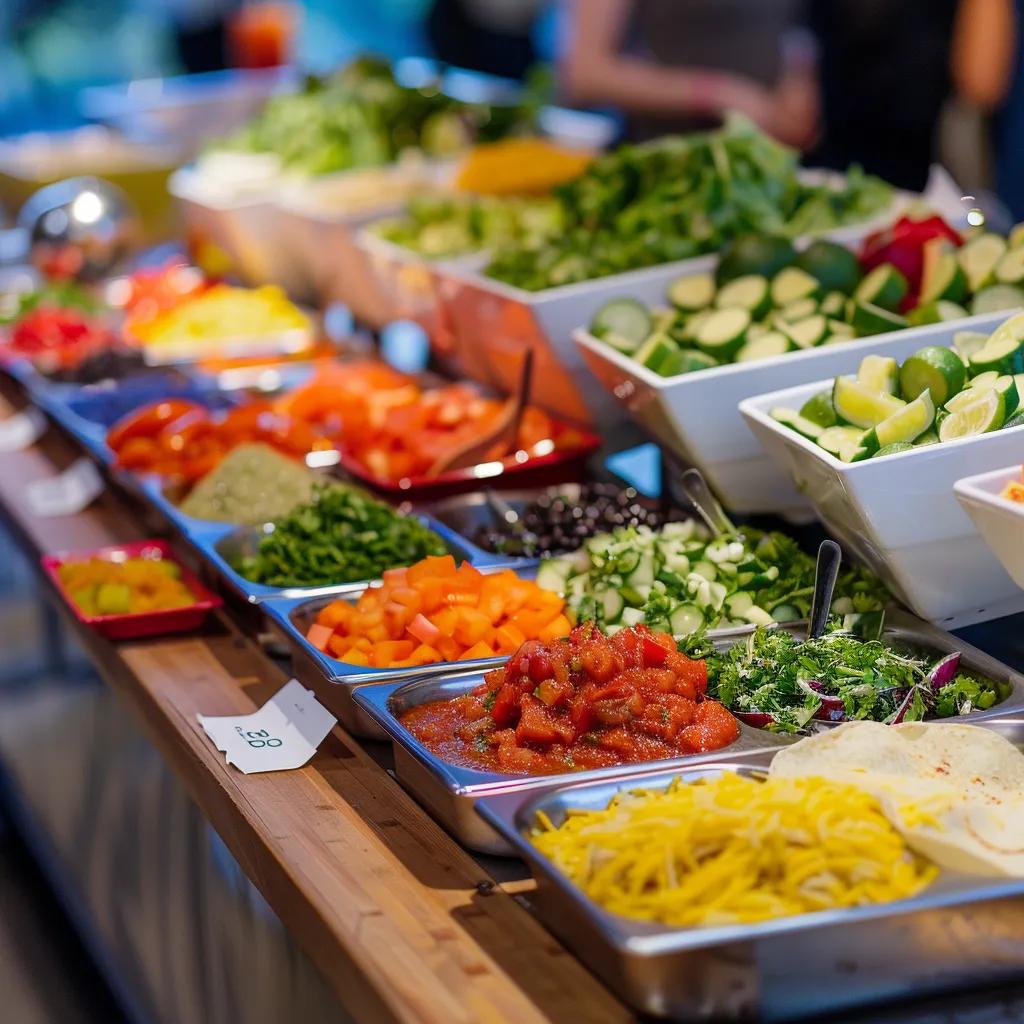
Introducing creative themes and interactive elements can turn routine back to school dinner ideas into a memorable celebration that sparks conversation and community spirit. By combining hands-on food stations, comforting classics and an eco-friendly approach, schools can engage educators, families and students alike while reinforcing shared values.
Incorporating Interactive Food Stations and Themed Menus
Putting a playful spin on dinner encourages guests to customize their plates and mingle. A “build-your-own” taco bar, for instance, offers seasoned proteins alongside bowls of fresh salsas, lettuce and shredded cheese, so every guest can assemble a meal to their taste. Slider stations let attendees layer mini burgers or chicken sandwiches with a variety of toppings. For something sweet, a dessert decorating station with plain cupcakes or sugar cookies invites guests to add colored frosting, sprinkles and edible accents. To broaden horizons, a “Taste of the World” passport menu presents bite-sized portions from several countries—say, falafel-filled pita pockets, teriyaki chicken skewers and empanadas—alongside a small card explaining each dish’s origin. These interactive concepts keep people moving and chatting, and they set the stage for more traditional comfort fare.
Popular Comfort Foods and Seasonal Dishes for School Events
Once guests have built their own bites, offering familiar, crowd-pleasing dishes creates a sense of warmth and nostalgia. Mini macaroni and cheese cups with a golden breadcrumb crust serve as easy hand-held portions of a childhood favorite. A hearty chili bar—with both vegetarian bean chili and classic beef chili—invites diners to top their bowls with shredded cheese, chopped onions and tortilla strips. Pair these with warm cornbread muffins or soft dinner rolls and a medley of autumn-roasted vegetables—think Brussels sprouts, sweet potatoes and carrots tossed in olive oil and herbs—for a balanced, seasonally inspired spread. Comfort classics like these appeal across generations and help guests feel at home in the school community.
Using Sustainable and Locally Sourced Ingredients
Aligning menus with eco-friendly practices reinforces a school’s commitment to environmental stewardship. Partnering with nearby farms ensures that produce—tomatoes, greens and seasonal vegetables—arrives fresh and supports the local economy. Free-range or pastured proteins from regional suppliers add both flavor and traceability. To reduce waste, choose compostable or reusable servingware and avoid single-use plastic utensils. Simple menu signage can highlight ingredient sources—“Greens from Maple Valley Farm” or “Pumpkin from Harvest Ridge”—educating guests about the origins of their meal. If possible, organize a post-event compost pickup so that food scraps return to the soil rather than the landfill.
Bringing It All Together
Successful back to school dinner ideas balance fun, flavor and values. Interactive stations break the ice and let guests personalize their plates, comfort dishes satisfy familiar palates, and sustainable sourcing ties the event to larger community goals. By planning menus that marry hands-on engagement with wholesome, locally driven ingredients, schools can create an evening that nourishes both body and spirit—and leaves attendees looking forward to the year ahead.
Conference efficiency sets a strong precedent for banquet catering praise.
Frequently Asked Questions
What are some creative themes for back to school dinner ideas?
Creative themes can elevate back to school dinner ideas by adding excitement and engagement. Consider a “Taste of the World” theme featuring international cuisine stations, or a “Backyard BBQ” with classic summer favorites. Interactive food stations, such as DIY taco bars or dessert decorating areas, encourage participation and conversation. Seasonal themes, like a harvest dinner in the fall, can also highlight local produce and create a warm, inviting atmosphere. These themes not only enhance the dining experience but also foster community spirit among attendees.
How can schools ensure food safety during catered events?
Food safety is crucial for any catered event. Schools should work with caterers who follow strict food safety guidelines, including proper food storage, temperature control, and hygiene practices. It’s important to confirm that the catering staff is trained in food safety protocols. Additionally, schools can designate a point person to oversee food handling and service during the event. Providing clear communication about dietary restrictions and allergies also helps ensure that all attendees can enjoy the meal safely.
What are some budget-friendly catering options for schools?
Budget-friendly catering options can help schools manage costs without sacrificing quality. Consider offering buffet-style service instead of plated meals, as this can reduce labor costs. Utilizing seasonal ingredients can also lower menu prices while ensuring freshness. Schools might explore package deals or discounts for repeat events with local caterers. Additionally, focusing on shared stations, like a salad or taco bar, allows for variety without the expense of multiple small plates. These strategies can help schools stay within budget while providing delicious meals.
How can schools promote their catered events to increase attendance?
Promoting catered events effectively can boost attendance and engagement. Schools can utilize newsletters, social media, and community boards to share event details and menu highlights. Creating visually appealing flyers or digital graphics showcasing the food options and themes can attract interest. Engaging families through personal invitations or reminders can also enhance participation. Additionally, highlighting the benefits of the event, such as community building and support for local businesses, can encourage more attendees to join in the celebration.
What role does feedback play in improving catering services for schools?
Feedback is essential for enhancing catering services in schools. Gathering input from attendees after events can provide valuable insights into what worked well and what could be improved. Schools can use surveys or informal discussions to collect opinions on menu choices, service quality, and overall experience. This feedback allows caterers to adjust their offerings and better meet the needs of the school community. Continuous improvement based on feedback fosters stronger partnerships between schools and catering services, leading to more successful future events.
How can schools incorporate sustainability into their catering choices?
Incorporating sustainability into catering choices can align with schools’ values and promote environmental responsibility. Schools can partner with local farms to source fresh, seasonal ingredients, reducing transportation emissions and supporting the local economy. Offering compostable or reusable servingware minimizes waste, while highlighting ingredient origins on menus educates attendees about sustainable practices. Additionally, schools can implement strategies to reduce food waste, such as planning portion sizes carefully and donating leftovers to local food banks. These efforts contribute to a healthier planet and community.
Conclusion
Coming up with memorable back to school dinner ideas and events should be as stress-free as possible. At A Delightful Bitefull Catering, we specialize in crafting delicious, crowd-pleasing menus that keep students, parents, and educators satisfied. From nutritious family-style meals to creative buffet options, we’ll handle every catering detail so you can focus on celebrating the school year ahead. Call us today at (770) 565-4146 or reach out to discuss your event—let’s make this school year’s kickoff meal one to remember!





